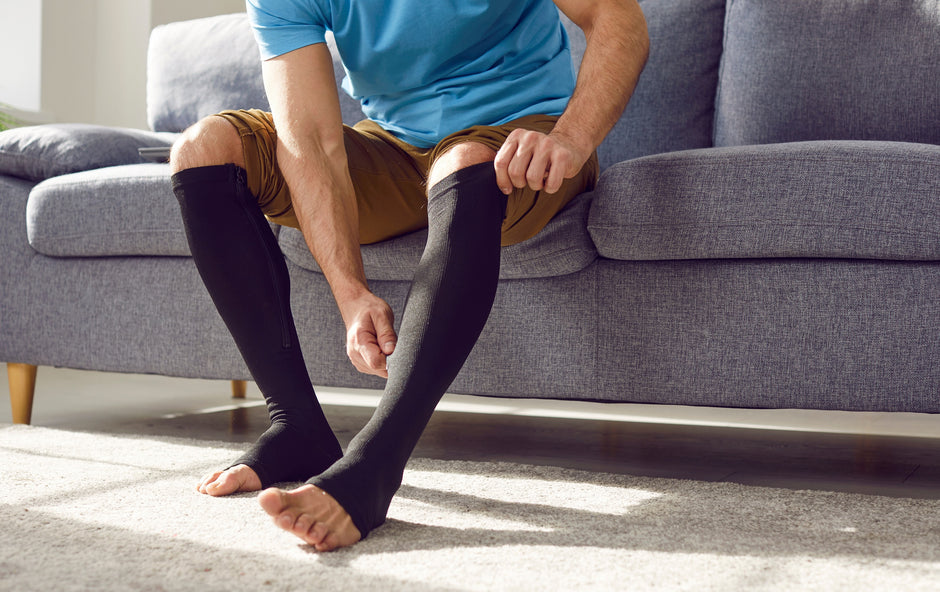Many reasons can make you a potential candidate for bladder catheterization. For those who are not familiar with how it all works: Urinary catheterization refers to a medical procedure involving the insertion of a thin, flexible tube (catheter) into the bladder generally via the urethra. Many people with difficulties passing urine or with failed bladders require the use of catheters to stay healthy and avoid more serious illnesses.
There are short-term and long-term reasons for using a catheter, as explained below.
A Short-Term Catheter is Used for:
- Instances where there is a blockage - such as a bladder stone or tumour, which prevents you from passing urine smoothly
- Removing clots or debris from the bladder after injury
- Surgical or ICU patients who need to empty the bladder after an operation or are unable to get out of bed to go to the bathroom
- Monitoring the urine output of a critically ill person or someone recovering from surgery
- Draining a woman's bladder after epidural anesthesia during childbirth
- An injury that has damaged the urethra
Some circumstances require the patient to have a catheter in place for a longer or more permanent period.
A Long-Term Catheter is Used for:
- People who still have urinary incontinence after all other treatments have been tried and failed
- Individuals who are bed-confined due to health issues or ageing
- Patients experiencing urinary retention (inability to empty the bladder when required)
- An obstruction like a kidney stone or swollen prostate that prevents the flow of urine, and surgery or medication are not options at the time
- Those who have neuropathic bladder, making them unable to drain it
In short, a catheter is useful when someone cannot or has difficulty emptying the bladder. The reasons are not limited to the examples given above.

Primary Types of Catheters
The most common types of catheters are intermittent, indwelling, and external. It helps to know the differences, particularly if you are shopping online for yourself, a patient, a friend, or a loved one.
Intermittent Catheter - A temporary solution
An intermittent catheter is considered the “standard” catheter and is comprised of a thin, flexible tube inserted into the bladder through the urethra as a temporary solution. The outer end may remain open for urine to drain into an attached receptacle. Otherwise, it will be attached to an external bag that is specially designed to collect urine.
After the bladder is emptied, the catheter needs to be replaced, which can be several times a day. If your healthcare provider or home healthcare nurse prescribes this type of catheter, you will receive guidance on how to safely insert and remove it. This is easier than it sounds as the tube usually comes pre-lubricated which makes it much quicker and less intrusive-feeling.
Indwelling Catheter - A short-medium term solution
Indwelling catheters - also known as a Foley Catheter - remain in place longer than an intermittent catheter. It is best used in situations that require urine elimination assistance for up to 30-days, depending on the specific health-related situation. The basic Foley catheter is a closed system that is inserted through the urethra or suprapubically. Both are sterile applications that keep the body safe from outside bacteria or infections.
Transurethral
These are similar to standard catheters, in the way they are inserted through the urethra and can be handled by a nurse. The main difference between a transurethral and the intermittent catheter is that the transurethral catheter is used for a longer period of time. Additionally, it can be handled by a nurse versus a doctor.
Suprapubically Catheter
Suprapubic catheters are inserted into the bladder via the anterior abdominal wall. A small incision is made above the pubic bone and below the umbilicus (belly button) and is done by a urologic specialist. The operation may require the patient to be put asleep or in a very relaxed state through the use of anesthesia.

External Catheters
Male incontinence is sometimes treated with absorbent diaper-type products. Although some male patients elect to use an external catheter, which is a silicone or latex condom-like device fitting over the penis instead of the urethra. It is basically rolled on like a condom and the urine is dispelled through a tube that is attached to the sheath and drains into a bag. These condom-type catheters should be emptied when it’s about half full and replaced every 24 hours. There are disposable and reusable external catheters that come with the choice of small or large bags.
Possible Side Effects of Intermittent or Foley Catheters
The use of either intermittent or foley catheters can increase the risk of contracting urinary tract infections - also referred to as a UTI. Intermittent catheters can also cause induced hematuria, bladder stones, and urethral strictures, all of which are painful. Foley catheters may result in discomfort and bladder spasms. External catheters may cause injury due to friction between the penis and the device.
Although these products are sterile, using a foreign object in the body long term can increase this risk, particularly as the user gets more familiar and relaxed about following proper guidelines and procedures. When using any catheter, it is important to observe hygiene and remain mindful of the potential risks. In other words: follow the doctor's instructions for the duration.
Where to Shop for Quality Catheters
The latest catheter products are made with quality materials and extreme attention to health-related details. Catheters have improved the quality of life for many people with problems in passing urine or are not able to go to the bathroom due to being bedridden or for other health-related reasons.
If and when your doctor recommends a catheter, be sure to shop with renowned distributors who are completely immersed and conversant with the most reliable, quality healthcare products available.
At Healthcare Solutions, our mission is to provide high-quality healthcare solutions throughout Canada and the United States cost-effectively, and that includes all types of catheters. Plus, we offer excellent catheter products that will suit the unique needs of every individual.
Browse our online store today!








